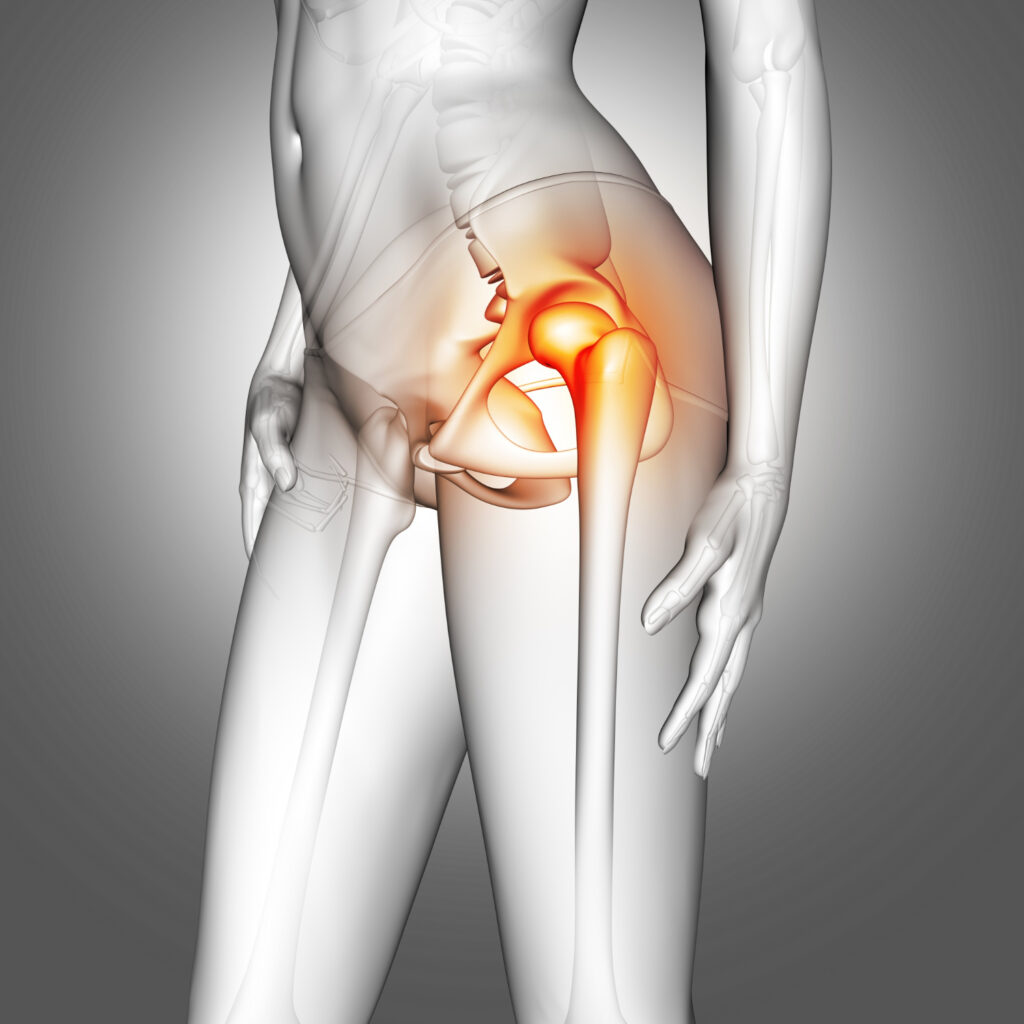Hip Replacement in Turkey
Hip replacement surgery is commonly used to relieve pain and improve mobility in people with damaged or worn-out hip joints. It’s often recommended for those with severe arthritis or injury. With advances in medical technology, the procedure is now safer and more effective than ever.
Procedure: Hip Replacement Surgery
Duration: 1 – 2 Hours
Length of Stay in Hospital : 1 – 3 Days
Cost in Turkey: €7000 to €12000
Anesthesia: General anesthesia
Success Rate: 90%
Final Results: 4 – 6 Weeks
Scars: Minimal
Pain: Slight
What is Hip Replacement?
Hip replacement, also known as hip arthroplasty, is a surgical procedure in which a damaged or worn-out hip joint is replaced with an artificial implant. The surgery is usually recommended when the hip joint has been severely damaged due to arthritis, fractures, or other conditions that limit mobility and cause chronic pain. The procedure can significantly improve your quality of life by restoring movement and reducing pain, allowing you to return to everyday activities more easily.

Cost of Hip Replacement in Turkey
The cost of hip replacement in Turkey can range from €7,000 to €12,000, depending on several factors. These include:
- The facility where the surgery takes place, as some hospitals offer state-of-the-art equipment and luxurious amenities that can increase the overall cost.
- The type of equipment and implant used for the procedure, as advanced prosthetics, may come with a higher price tag.
- The experience and reputation of the surgeon, as more experienced surgeons may charge more for their services.
- Post-operative care and rehabilitation services may also affect the total cost of your treatment.
Ideal Candidate for Hip Replacement in Turkey
You may be an ideal candidate for hip replacement surgery in Turkey if:
- You suffer from chronic hip pain that significantly limits your mobility and daily activities.
- Non-surgical treatments like medications, physical therapy, or injections have not provided adequate relief.
- You experience stiffness in the hip joint, especially after rest or inactivity.
- Osteoarthritis, rheumatoid arthritis, or traumatic injury has severely damaged your hip joint.
- You are in good general health and can undergo surgery safely, as determined by your healthcare provider.
- Your condition affects your quality of life, making everyday tasks like walking or sitting difficult and painful.
Hip Replacement Results
Hip replacement surgery has a success rate of over 90%, making it one of the most effective orthopedic surgeries available. After recovery, most patients experience significant pain relief, improved mobility, and a better quality of life.
Additionally, the patient satisfaction rate is exceptionally high, with around 85-95% of patients expressing satisfaction with their results, particularly regarding pain relief and regained function. After rehabilitation, many patients can resume their normal activities, including walking, swimming, and low-impact sports.
Hip Replacement Recovery Time
Recovery from hip replacement surgery varies by individual, but it typically takes several months to achieve full mobility. Patients usually follow a structured rehabilitation plan, and mobility and pain relief improvements are seen progressively over time. By 6 to 12 months, most patients regain normal hip function.
Hip Replacement 1 Week Post Op
You’ll likely experience some pain and swelling in the first week after surgery, but this can be managed with medications and rest. Physical therapy often starts immediately, focusing on gentle exercises to improve mobility and prevent stiffness. You may still need a walker or crutches to get around, but early movement is encouraged to aid recovery.
Hip Replacement 3 Weeks Post Op
By the third week, you should feel more comfortable walking short distances without assistance. Pain and swelling will be reduced, and physical therapy sessions will intensify to strengthen the muscles around your hip. Many patients can transition to using a cane or walking stick at this stage, and daily activities like showering or cooking may become easier.
Hip Replacement 3 Months Post Op
At three months, most patients have regained a significant range of motion and can engage in light daily activities without discomfort. Walking unaided is common, and you may return to work if your job is not physically demanding. However, strenuous and high-impact exercises should still be avoided during this period.
Hip Replacement 6 Months Post Op
By six months, most patients experience minimal to no pain and can easily perform most daily tasks. You may be able to return to low-impact exercises, such as swimming or cycling, and continue to build strength through physical therapy. Full recovery is nearly complete, although some minor stiffness may persist.
Hip Replacement 1 Year Post Op
After one year, most patients achieve full recovery and are able to engage in a wide range of activities, including low-impact sports and even light jogging. Hip implants are designed to last 15-20 years or more, so you can expect long-term relief from pain and improved mobility. Regular check-ups with your surgeon are still recommended to monitor the condition of your new joint.
Types of Hip Replacement
Different hip replacement surgeries depend on the patient’s condition and the surgeon’s recommendation. The main types include total hip replacement, partial hip replacement, and hip resurfacing. Each type has its advantages and is chosen based on the patient’s specific needs.
Total Hip Replacement
In total hip replacement, artificial implants replace both the damaged ball (femoral head) and the socket (acetabulum) of the hip joint. This is the most common type of hip replacement surgery and is often recommended for patients with severe arthritis or joint damage. The procedure is highly effective, with patients typically experiencing significant pain relief and restored mobility.
Partial Hip Replacement
Partial hip replacement, also known as hemiarthroplasty, involves replacing only the damaged ball of the hip joint while leaving the natural socket intact. This surgery is typically performed for patients with hip fractures whose socket is still healthy. It is less invasive than total hip replacement but not as commonly used for treating arthritis.
Hip Resurfacing
In hip resurfacing, the damaged surfaces of the hip joint are trimmed and capped with a metal covering rather than fully replacing the ball and socket. This option is often recommended for younger, more active patients because it preserves more bone and allows for greater joint stability. However, it may not be suitable for patients with severe arthritis or low bone density.
How Does the Hip Replacement Procedure Work?
Hip replacement surgery is a multi-step process that involves careful planning, medical evaluation, and post-operative care to ensure a successful outcome. The procedure is designed to replace a damaged hip joint with an artificial one, relieving pain and improving mobility.
Consultation
The process begins with a consultation with an orthopedic surgeon, discussing your symptoms, medical history, and lifestyle. The surgeon will assess whether hip replacement is the best treatment option for your condition. X-rays or other imaging tests are usually done to evaluate the extent of joint damage and decide on the appropriate type of hip replacement.
Medical Test
Before surgery, you’ll undergo several medical tests, including blood work, heart evaluations, and imaging scans. These tests ensure that you’re healthy enough to undergo surgery and that no underlying conditions could complicate the procedure. Pre-operative tests are critical for minimizing risks and ensuring a smooth surgery and recovery.
Surgery
Hip replacement surgery typically takes 1 to 2 hours and is performed under general or regional anesthesia. During the procedure, the surgeon removes the damaged portions of the hip joint and replaces them with artificial components made of metal, ceramic, or plastic. The aim is to restore the hip joint’s function, reduce pain, and improve mobility.
Recovery
After surgery, you’ll spend a few days in the hospital for initial recovery. During this time, pain management and physical therapy will begin. You’ll be encouraged to start walking with the help of a walker or crutches. Recovery times vary, but most patients can resume light activities within a few weeks and fully recover in 6 to 12 months.
Follow Up
Regular follow-up appointments with your surgeon are essential to monitor your healing process. The surgeon will check for any signs of complications, such as infection or dislocation, and assess how well the artificial hip joint functions. These check-ups help ensure you’re on track for a full recovery and that your new hip works as expected.
Side Effects of Hip Replacement
- Infection at the site of surgery, which may require additional treatment.
- Blood clots in the legs or lungs (deep vein thrombosis or pulmonary embolism).
- Joint dislocation, where the new hip may become unstable and out of place.
- Nerve or blood vessel damage near the surgical area, though rare.
- Leg length discrepancy: one leg may feel shorter or longer after surgery.
- Loosening of the implant over time which may require revision surgery.
- Persistent pain or stiffness in some patients, though usually temporary.
- Allergic reaction to the materials used in the hip implant, though this is uncommon.
How to Get a Hip Replacement in Istanbul (Step-by-Step)
Step 1: Research and Choose a Clinic
Start by researching reputable Istanbul hospitals and clinics specializing in orthopedic surgeries. Look for facilities with high success rates, experienced surgeons, and modern medical equipment. Medical tourism agencies can also assist in finding the right clinic for you.
Step 2: Initial Consultation (Remote or In-person)
Once you’ve selected a clinic, schedule an initial consultation. Many clinics in Istanbul offer remote consultations, during which you can discuss your condition with the surgeon, share medical records, and receive a treatment plan. This step helps the surgeon understand your medical history and determine your eligibility for surgery.
Step 3: Travel Arrangements and Visa
After confirming the surgery date, make travel arrangements, including flights and accommodations. Check the visa requirements for your country and ensure you have the necessary documents. Many medical facilities in Istanbul offer assistance with travel logistics as part of their medical tourism packages.
Step 4: Pre-operative Tests and Evaluations
Upon arrival in Istanbul, you will undergo pre-operative medical tests, such as blood tests, X-rays, and any additional evaluations, to confirm your fit for surgery. These tests are essential for minimizing risks and ensuring your overall health suits the procedure.
Step 5: Surgery and Hospital Stay
Your hip replacement surgery will take place at the chosen clinic, where you’ll stay for a few days post-operation for monitoring. The procedure usually lasts 1 to 2 hours, and after surgery, you’ll begin initial recovery with the help of hospital staff, including physical therapy.
Step 6: Post-operative Care and Follow-up
After you’re discharged, you’ll need to stay in Istanbul for a short recovery period (usually a few weeks) to ensure no complications. You will attend follow-up appointments with the surgeon to monitor your healing and receive rehabilitation guidance before returning home.
